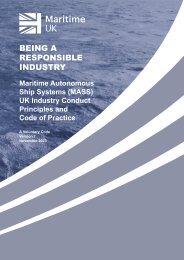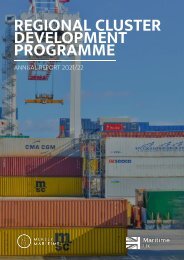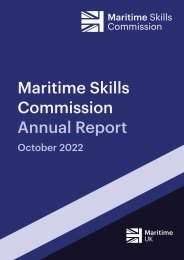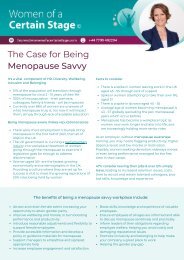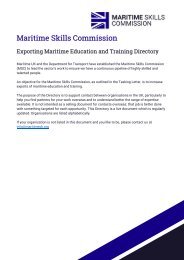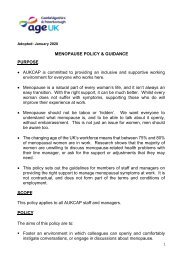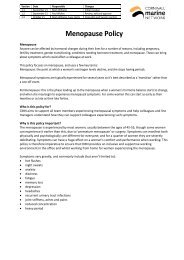code_of_practice_V3_2019
Create successful ePaper yourself
Turn your PDF publications into a flip-book with our unique Google optimized e-Paper software.
11 System Integrity Certification<br />
and Test Procedures<br />
11.1 OBJECTIVE<br />
The objective <strong>of</strong> this Chapter is to outline the certification and test procedures required for the<br />
situational awareness, control and other mission-critical systems within a MASS.<br />
11.2 SCOPE<br />
11.2.1 Verification shall be undertaken to provide assurance that the Situational Awareness and Control System complies<br />
with the provisions <strong>of</strong> this Code and remains compliant throughout its operational life.<br />
11.2.2 The Risk Assessment for the MASS should be reviewed in detail, to check that no critical single point failures<br />
have been overlooked. The Risk Assessment should be confirmed as being thorough and conservative in its<br />
safety assessment.<br />
11.3 SYSTEM TEST BASED ON RISK ASSESSMENT<br />
11.3.1 All safety critical items covered by failure sensing and remedial action, or by dual or multiple redundancy, having<br />
been highlighted in the Risk Assessment, should be individually tested by simulating each failure mode <strong>of</strong> each<br />
sub-system or component and verifying that the backup measures are effective in mitigating any critical<br />
consequences.<br />
11.3.2 The effects <strong>of</strong> power failures should be checked, to ensure that simultaneous power failures on several sub-<br />
systems do not invalidate critical safety measures that rely on dual redundant systems.<br />
11.3.3 System integrity testing should be performed in a hierarchical manner in such a way as to ensure that each<br />
submodule functions in accordance with performance requirements. Integration testing should be performed to<br />
test the interfaces and the performance <strong>of</strong> the combined systems.<br />
11.3.4 Electronic systems should be installed in the same manner as for conventionally manned ships. This includes<br />
EMC compliance, use <strong>of</strong> enclosures and connectors with suitable marine grade IP ratings, communications standards<br />
EIA-422, EIA-232, NMEA 0183 and NMEA 2000 and others as appropriate.<br />
11.3.5 Simulators may be used to verify levels <strong>of</strong> performance <strong>of</strong> some but not all systems. This includes autopilot<br />
performance, collision avoidance algorithms, though not the systems whose performance is critically dependent<br />
on real-world stimuli, such as optical and inertial sensors.<br />
68<br />
MASS UK Industry Conduct Principles and Code <strong>of</strong> Practice Version 3




